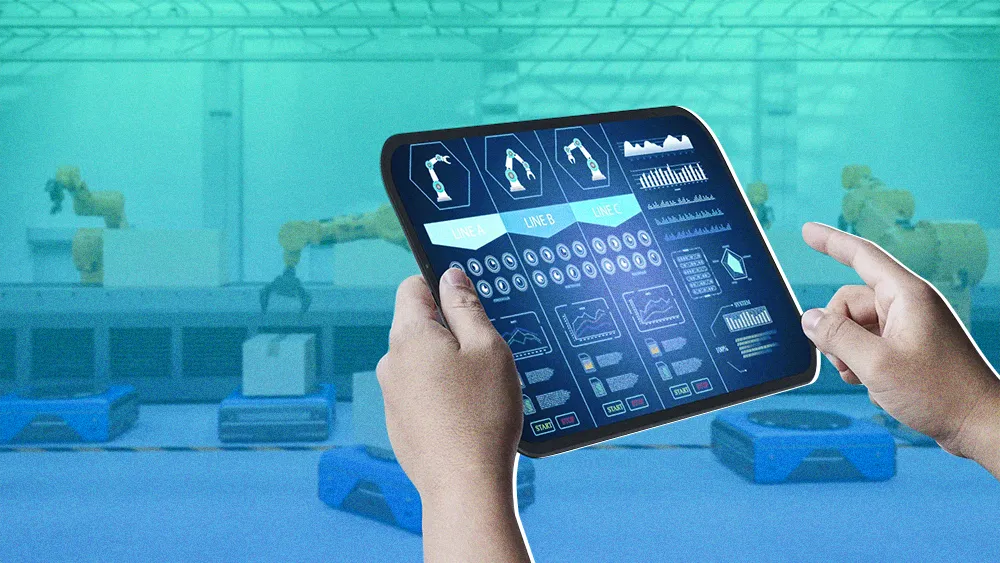
All articles
Tech Leaders Overhaul Data Governance to Unleash AI and Outpace Rivals
Dr. Ganesh Selvaraj, a consultant in Data, AI, and Decision Intelligence, explains how a new wave of leaders is redefining governance as a strategic accelerator for enterprise AI innovation.

Key Points
A new wave of leaders is reframing data governance from a bureaucratic brake to a strategic accelerator for AI innovation.
Dr. Ganesh Selvaraj, a consultant in Data, AI, and Decision Intelligence, explains how a new approach can help organizations reframe governance as a strategic accelerator focused on outcomes over process.
The solution replaces rigid checklists with a risk-based model that uses automated guardrails and a collaborative culture to help teams ship AI safely and quickly.
Instead of rigid, one-size-fits-all checklists, the approach shifts the fundamental focus. The question shifts from asking if a process was followed to whether the actual risk was mitigated.

Data governance has a reputation as a bureaucratic brake on innovation. Now, a new wave of leaders is redefining it as a strategic accelerator, especially as organizations look to capitalize on AI. By pivoting from compliance-driven checklists to risk-adjusted, opportunity-based enablement, the approach builds a trusted foundation so teams can move faster and safely.
Dr. Ganesh Selvaraj, a consultant in Data, AI, and Decision Intelligence, puts this idea into practice daily. With a PhD in AI & Cognitive Science and experience leading the Data & AI function for a multi-billion-dollar organization, Dr. Ganesh's perspective blends deep academic knowledge with practical expertise. To unlock the full potential of data and AI, he says, organizations must fundamentally rethink governance first.
"Instead of rigid, one-size-fits-all checklists, the most effective approach shifts the fundamental focus. Instead of asking if a process was followed, the goal is finding out whether the risk was actually mitigated or not," Dr. Ganesh says. For him, the aim is to make governance so effective that it becomes what he calls "ambient governance."
To prove its value, Dr. Ganesh measures success across two distinct lanes: the efficiency lane, which uses Agile metrics and a FinOps lens to track delivery speed and cost, and the effectiveness lane, which uses OKRs to measure decision quality and business impact.
Targeted controls, tangible results: As an example, Dr. Ganesh points to a real-world case in which a risk-adjusted model produced tangible preventive outcomes. "In one harm-prevention system, we made scrutiny transparent: high-risk features touching PII received tighter controls, while low-risk outputs moved quickly. The outcome was a fast, efficient capability that prevented over 10% of actual harm within a year. If compliance had gated the entire program upfront, it wouldn’t have shipped. And those preventable harms would have remained."
But technology is only half the battle, Dr. Ganesh explains. Even the best processes risk failure if the culture doesn't evolve alongside them. Instead, success depends on a cultural transformation in which governance is treated as a collaborative undertaking, Dr. Ganesh says. "A cultural shift happens when the governance team's question changes from telling people to 'complete these 47 forms first' to asking, 'How can we help you ship this model safely?'"
Moving away from a top-down mandate isn't always easy, however, Dr. Ganesh continues. In fact, the transformation often involves breaking down organizational silos that traditionally pit teams against one another.
Learn, don't lecture: To build buy-in, embed responsibility directly into the operating model, Dr. Ganesh advises. "Companies like Airbnb and Netflix built 'Data Universities' that focused on how governance enables better decisions, successfully reframing it as a competitive advantage." Here, data stewards own quality at the source, and decision-making is built on trust. "I’ve run 'Friday people and process sessions,' which are open forums where anyone can discuss challenges or pain points. Opening the floor helps catch weak signals and lets people reshape governance so it fits their reality."
Stick with the old model and incentivize a culture where teams become "proud bottlenecks," Dr. Ganesh cautions. As a solution, he proposes defining "guardrails for patterns," which establish pre-approved, compliant scenarios. Any use case that fits a pre-approved pattern can proceed with delegated authority, he explains. Instead of forcing every project through the same narrow gate, guardrails are embedded directly into DataOps and MLOps pipelines to automate governance.
That evolution becomes even more crucial as organizations address the rise of agentic AI, where autonomous systems collaborate at machine speed. Now, some experts say that periodic reviews are already becoming insufficient on their own.
From guardrails to circuit breakers: "We're moving from governing static data to dynamic, multi-agent systems, so our controls have to evolve. The 'guardrails' that work for predictable processes need to be supplemented with automated 'circuit breakers' that can catch model drift or unwanted agent actions in real time."
Looking ahead, Dr. Ganesh sees governance becoming ambient and largely autonomous. Core controls operate continuously in the background, with AI agents handling classification, lineage, access, and data quality while humans focus on judgment, ethics, and strategic decisions. Instead of periodic reviews, checks run in real time, pipelines correct issues as they emerge, and compliance operates as an always-on system, not a quarterly event.
Ambient and automated: "Governance is becoming fully ambient and automated. AI agents now handle classification, lineage, access, and quality monitoring behind the scenes, while people focus on strategic trade-offs and ethics. We are moving from point-in-time audits to adaptive, always-on governance," Dr. Ganesh says. "By 2028, organizations with mature foundations will deploy AI models about five times faster because provenance, explainability, and bias testing are built in from the start, not rushed in at regulator time."
Greater speed, higher stakes: This shift accelerates delivery and builds trust into every decision. But it also raises the stakes. "Without solid governance under the hood, the AI jetpack exposes more risk than opportunity," Dr. Ganesh notes. Organizations moving too fast without strong foundations are learning that cracks scale with ambition, and the fallout extends beyond governance to business performance itself.
Today, that vision is already becoming a reality for Dr. Ganesh, who's building an AI agent to automate compliance for other systems. "By 2028, organizations with mature foundations will deploy AI models about five times faster, because critical checks for provenance, explainability, and bias are proactively baked into the development lifecycle," he says.
Meanwhile, the new paradigm is creating demand for real-time, end-to-end transparency, Dr. Ganesh concludes. But it also requires adopting more adaptive controls. "Without solid data governance under the hood, the ‘AI jetpack’ will expose more risk than opportunity. It’s critical to build solid, scalable processes before pushing for speed because the cracks from weak foundations scale beyond governance, impacting the business itself."





